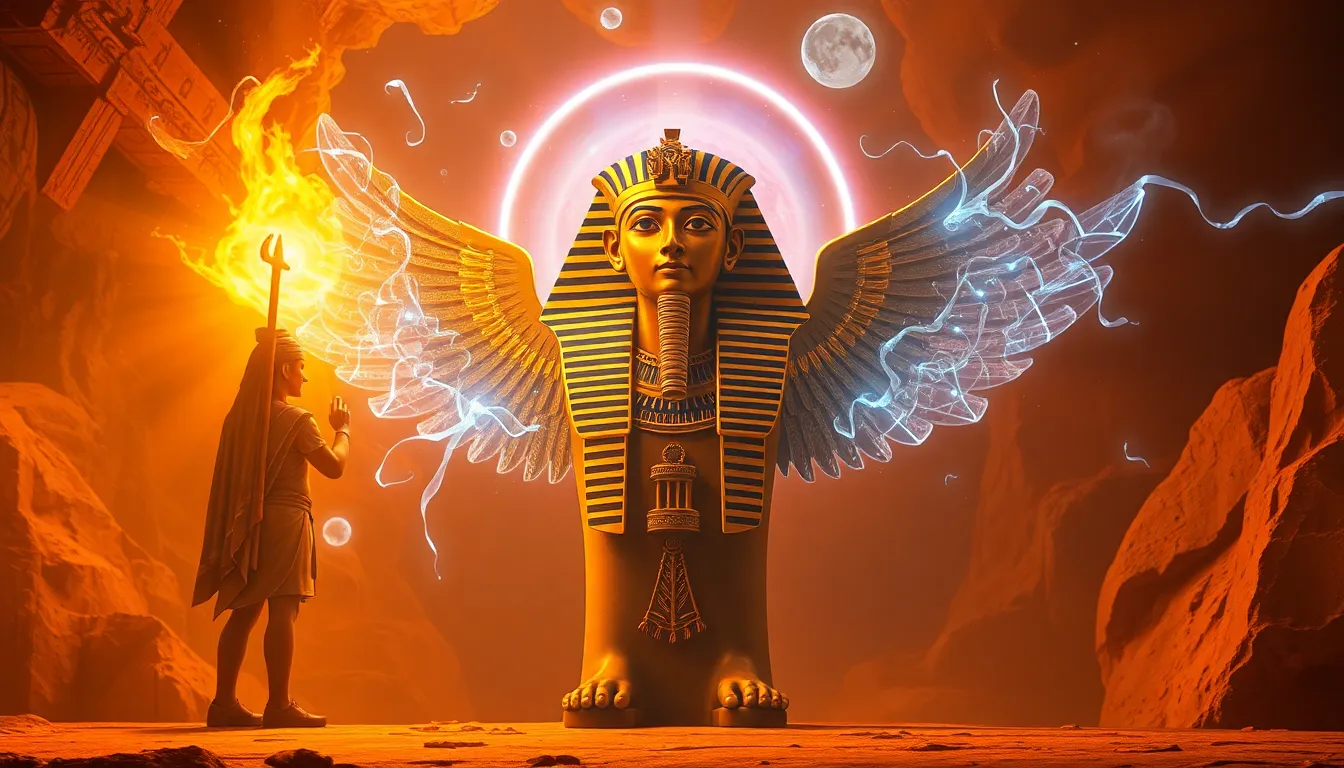The Pharaoh’s Divine Connection to the Spiritual Realm
I. Introduction
The Pharaoh was not just a ruler; he was considered the living embodiment of divine authority in ancient Egyptian society. As the highest political and religious leader, the Pharaoh held the crucial role of maintaining order and harmony within the kingdom, acting as an intermediary between the gods and the people.
Ancient Egyptian spirituality was rich and complex, rooted in the belief that the universe was governed by a set of divine principles. The Pharaoh was central to these beliefs, serving as a bridge to the spiritual realm. This article seeks to explore the profound connection between the Pharaoh and the divine, shedding light on the spiritual dynamics that shaped ancient Egyptian civilization.
II. The Concept of Ma’at: Order and Harmony
At the heart of ancient Egyptian belief systems was the concept of Ma’at, which represented truth, balance, order, and harmony. Ma’at was personified by a goddess who played a crucial role in maintaining the balance of the cosmos.
The Pharaoh was seen as the embodiment of Ma’at, responsible for upholding its principles throughout the kingdom. His actions were believed to directly influence the stability of the universe; thus, maintaining cosmic order was paramount. The implications of this responsibility were profound:
- Ensuring justice and fairness in governance.
- Conducting rituals to appease the gods.
- Protecting the land from chaos and disorder.
III. The Divine Right to Rule
The belief in the Pharaoh’s divine lineage was a cornerstone of ancient Egyptian governance. Pharaohs were thought to be descendants of the gods, particularly associated with deities such as Horus, Osiris, and Ra. This divine connection granted them the legitimacy to rule and enforced the idea that their authority was sanctioned by the gods.
The connection to these gods provided the Pharaoh with a divine right to govern, reinforcing the belief that any challenge to the Pharaoh was a challenge to the gods themselves. This belief system had significant implications for governance:
- Divine sanction legitimized the Pharaoh’s decisions.
- Rituals were performed to reinforce this connection.
- Public perception of the Pharaoh as a godly figure ensured loyalty and stability.
IV. Rituals and Ceremonies
The Pharaoh engaged in various rituals and ceremonies to connect with the divine and maintain Ma’at. These rituals were essential for ensuring the favor of the gods and reinforcing the Pharaoh’s divine status.
Key rituals included:
- The Sed festival, celebrating the Pharaoh’s rejuvenation and strength.
- Offering rituals conducted in temples to appease the gods.
- Funerary rites that ensured safe passage to the afterlife.
Temples served as sacred spaces where these rituals took place, designed to be the homes of the gods. The role of priests and priestesses was vital, as they facilitated the connection between the Pharaoh and the divine through their sacred duties.
V. The Afterlife and the Pharaoh’s Journey
Beliefs regarding the afterlife were central to ancient Egyptian spirituality. The Egyptians believed in a complex afterlife journey where the deceased faced judgment in the Duat, the spiritual realm. The Pharaoh’s preparation for the afterlife was a significant aspect of his reign, ensuring a safe passage to eternity.
The Pharaoh underwent extensive preparations, including:
- Construction of elaborate tombs, such as the pyramids.
- Gathering of burial goods to accompany him in the afterlife.
- Recitation of spells and prayers to protect him during his journey.
His connection to the Duat was solidified through these practices, ensuring that he would be welcomed among the gods after death.
VI. Art and Iconography: Depicting the Divine Connection
Art and iconography played a crucial role in communicating the Pharaoh’s divine connection. Pharaohs were often depicted alongside gods in various forms of art, showcasing their role as intermediaries between the divine and the mortal.
Symbolism in royal iconography was rich and varied:
- The ankh symbolized life and was often depicted in the hands of the Pharaoh.
- The crook and flail represented the Pharaoh’s role as a shepherd of his people.
- Hieroglyphs conveyed spiritual messages, often illustrating the Pharaoh’s divine lineage.
These artistic representations served to reinforce the Pharaoh’s divine connection and educate the populace on the spiritual significance of their ruler.
VII. Historical Examples of Pharaohs and Their Divine Connections
Throughout history, various Pharaohs interpreted their divine roles in unique ways. Two notable examples are Akhenaten and Tutankhamun.
Akhenaten is known for his radical religious reforms, promoting the worship of the sun disk Aten over traditional gods. His reign represented a significant shift in spiritual beliefs, emphasizing personal connection to the divine.
Tutankhamun, on the other hand, restored the traditional polytheistic worship following Akhenaten’s reign. His tomb, filled with treasures and inscriptions, reflects the deep-rooted beliefs in the afterlife and the Pharaoh’s divine connection.
The impact of political changes on spiritual beliefs is evident, demonstrating the evolving nature of the Pharaoh’s role in relation to the divine.
VIII. Conclusion
In summary, the Pharaoh’s connection to the divine was a foundational aspect of ancient Egyptian society, shaping governance, spirituality, and the afterlife. The principles of Ma’at guided their rule, while rituals and ceremonies reinforced their divine authority.
The legacy of this connection continues to resonate, reminding us of the importance of spirituality in leadership and governance today. As we reflect on the past, we recognize the enduring impact of these beliefs on the structure and values of ancient Egyptian civilization.




